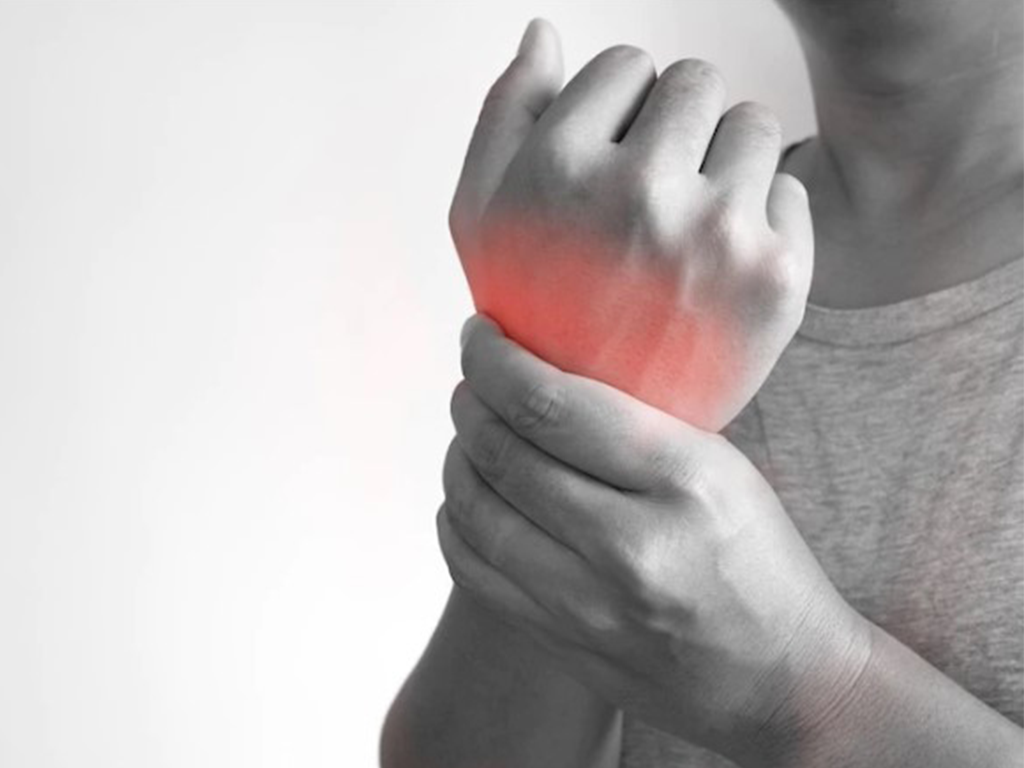What is carpal tunnel syndrome?
Carpal tunnel is the space confined between the carpal bones dorsally and the carpal ligament (flexor retinaculum) volarly. The median nerve is susceptible to pressure as its course is through the tunnel. Carpal tunnel syndrome (CTS) is characterised by sensory loss and motor weakness that occurs when the nerve is compressed in the carpal tunnel. Any injury, compression, ischemia, and neurological conditions may cause a decrease in the space of the carpal tunnel or cause the contents of the tunnel to enlarge. This thereby reduces the space results in CTS.
What are the symptoms of CTS?
- Increasing pain and paraesthesia (abnormal sensation, typically tingling “pins and needles”) in the hand.
- Progressive weakness in the thumbs’ muscles (thenar muscles and first two lumbrical.)
- Sensory loss in the distribution of the median nerve.
- Reduced ROM at wrist and thumb and 2nd and 3rd fingers.
Common functional impairments
- Decrease in prehension (tip-to-tip, tip-to-pad, and pad-to-pad) activities that require fine control of the thumb. Examples: Buttoning-unbuttoning shirt, handling small objects.
- Avoidance of using the areas of hand with the sensory deficit.
- Inability to sustain wrist or finger movements while repetitive movements need breaks. Example: Counting cash, cutting with scissors, typing, etc.
- May disturb sleep.
What is the treatment of CTS?
In patients with mild to moderate symptoms, conservation (non-operative) management is used. The aim of the conservative intervention is to minimise and eliminate the causative factors. It includes-
- Nerve protection
- Use of a static wrist orthosis in the neutral position at night.
- Protect areas that have reduced sensations.
- Activity modifications
- Identity and modify provoking activities and faulty postures. Modification of activities to keep the wrist in a neutral position.
- Emphasis on the importance of reduction of stresses on the nerve.
- Mobility at the restricted joints, muscles/tendons.
- Tendon gliding exercises.
- Median nerve mobilization exercises.
- Carpal mobilizations if restricted.
The patient plays a major role in the treatment, just as much as the doctor does. It is essential that the patient monitors symptoms and reaches out to the doctor as soon as they face any discomfort.
Surgical Management: If the conservative intervention does not relieve the symptoms or if the symptoms are severe such as weakness, pain, persistent numbness or severe reduction in functional use, surgical management is the best option. Surgical decompression is effective to increase the volume of the carpal tunnel and relieve the compression on the median nerve. Usually, a dressing or an orthosis is used following surgery and physiotherapy is started.
Physiotherapy interventions include gradual training of grip and pinch strength, wound management and oedema control strategies, active tendon gliding exercises and exercises at the forearm, elbow and shoulder. After the suture removal, gentle scar mobilizations, muscle performance exercises, dexterity exercises, desensitization and sensory re-education is started. The patient is expected to return to full activity by 6-12 weeks.
Why Choose Sancheti Hospital, Pune for the treatment of Carpal Tunnel Syndrome?
- Sancheti Hospital, Pune is India’s second-best hospital.
- 56 Years of Experience in Orthopedic and Rehabilitation.
- Use of latest technologies and types of equipment.
- In-patient and Outpatient physiotherapy.
- Hassle-free appointment.








0 comments on “Know About Carpal Tunnel Syndrome: Symptoms and Treatment”